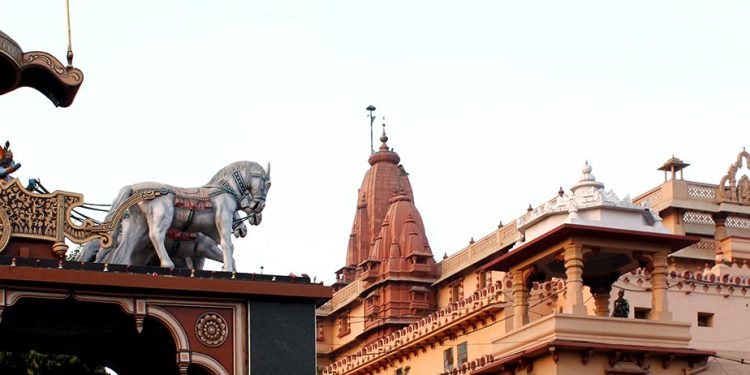Shri Krishna Janmbhoomi is a religious temple in Mathura, Uttar Pradesh. The temple is built around the prison cell where the ancient Hindu god Lord Krishna is said to have been born. It is situated next to Kesava Deo Temple and a mosque, photography is banned inside the complex by the government.Temple is revered as one of the 108 Divya Desam temples, dedicated to Lord Vishnu.
Shrine’s History
1.The most famous of Mathuras temples is the Krishna Janmasthan Temple, built around the prison cell where Krishna was born after his parents were imprisoned by his evil uncle, Kansa, king of Mathura. One of the most venerated shrines in India, the temple complex is located west of Mathuras old city and thronged by pilgrims throughout the year, whose numbers swell exponentially during festivals.
It is believed there was a massive idol of Krishna, over 4 m tall and made of solid gold, which was stolen during an attack by Mahmud of Ghazni. The present Krishna Janmasthan Temple complex is fairly new. Inside, visitors will find paintings of scenes from Krishnas life, an idol of Krishna, Balarama and his beloved, Radha, and a stepped water tank.
2.The temple was built in Mathura, Uttar Pradesh over a prison, believed to be the birthplace of Lord Krishna. In contemporary memory, it was built by Raja Vir Sinh Bundela of Orchha, in the reign of Jahangir. The Rajput prince enjoyed a special favour with the Mughal on account of his support to Jahangir in his succession. The site has been a deeply religious one for the Hindus.
It is said that the first temple here was constructed almost 5,000 years ago by Vajranabha, the great grandson of Lord Krishna. The next big temple was constructed here during the time of the Gupta Emperor Chandragupta II, around 400 AD. This temple was so grand that it was said that neither painting nor description could describe it. The second temple at the site came up during the rule of Chandragupta Vikramaditya.
It was destroyed in 1017 AD by Mahmud of Ghazni. In Katra Keshavdev, they found an inscription on a stone slab which speaks of the third temple, built by Jajja in Vikrama Samvat 1207 during the rule of Vijay Pal Deva. It’s said Chaitanya Mahaprabhu visited the same temple when he came to Mathura before its destruction by the forces of Sikandar Lodhi in the 16th Century.
The fourth temple, the destruction of which is the source of the modern controversy, was built by Veer Singh Dev Bundela of Orchha when Jehangir was on the Mughal throne. But Aurangzeb’s said to have ordered its destruction in 1669 and the present-day Idgah was constructed over a part of the raised plinth of the Keshavdev temple.
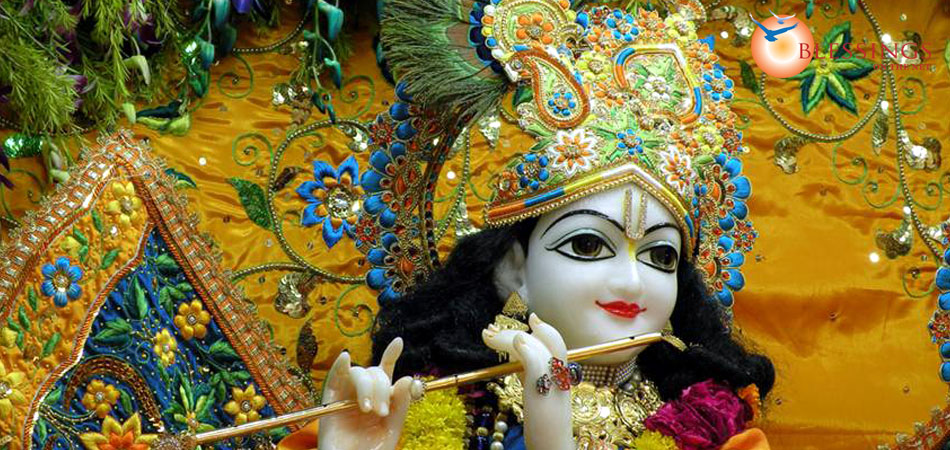
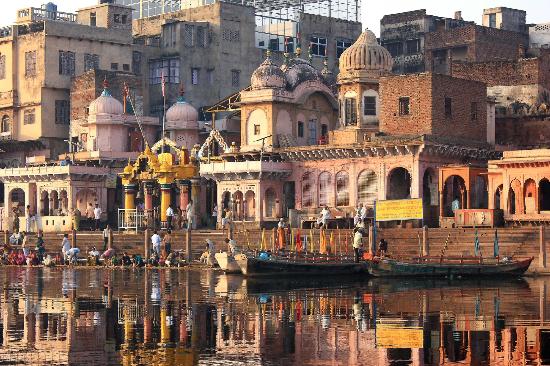
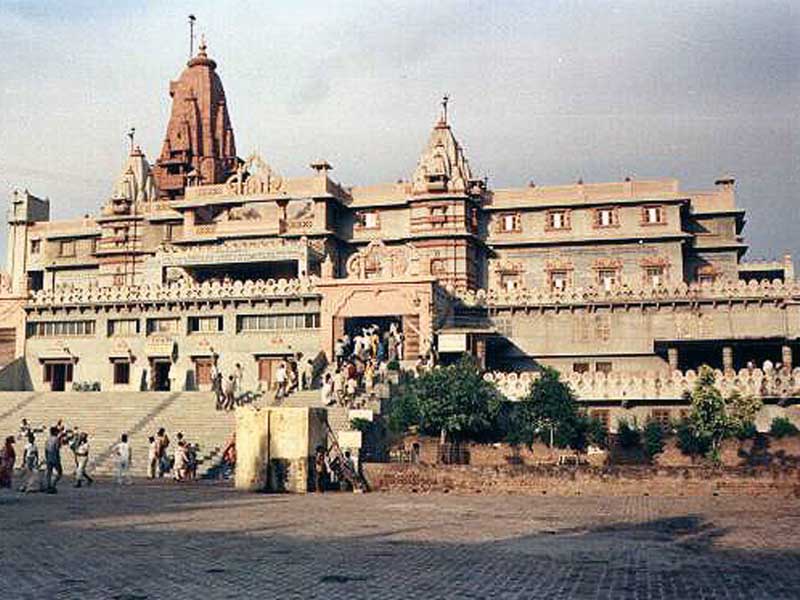
Shrine’s Map Location and How to Go There
By Road
Mathura is 150 kilometres by road from Delhi. The journey is by a well-constructed highway, NH-2 and Mathura are reached within three hours. Buses and private vehicles are regularly playing between Delhi and Mathura.
By Rail
Mathura is a prominent railway station in Northern India. Therefore, almost all trains from all over India that pass through the region, halt at Mathura. From Delhi, Taj Express leaves Nizamuddin Railway Station early in the morning and reaches Mathura in a couple of hours.
By Air
To reach Mathura by air, one must land at Agra and then drive down to Mathura, which is less than 50 km away, or land in Delhi and then take NH2 to Mathura (150 Kms).
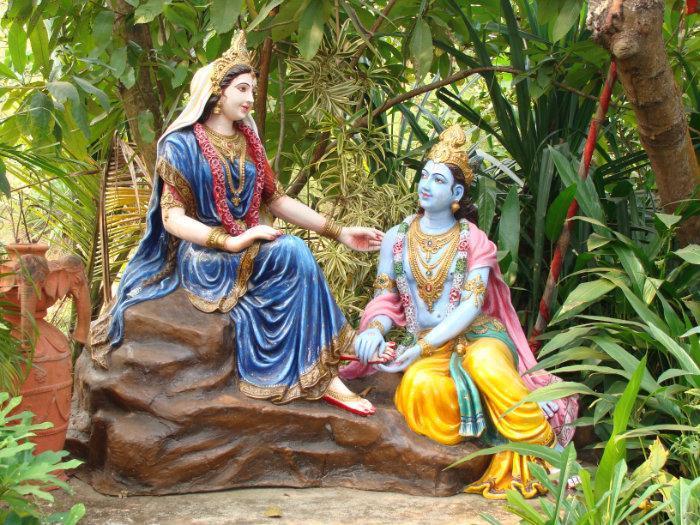
Shrine Timings
Timings: SUMMER Thursday 11th April 2013 to Sunday 17th November 2013 5.00 A.M. to 12.00 Noon 4.00 P.M. to 9.30 P.M. GARBHA-GRIHA DARSHAN 5.00 A.M. to 9.30 P.M WINTER Thursday 29th November 2012 to Wednesday 10th April 2013 5.30 A.M. to 12.00 Noon 3.00 P.M. to 8.30 P.M. GARBHA-GRIHA DARSHAN 5.30 A.M. to 8.30 P.M.
Events Celebrated at This Shrine
Festivals:This temple holds its own festival calendar, and hosts nearly all of the Hindu functions within its own premises independently. The adjacent residential areas of Mallapura, Govind Nagar, and JagannathPuri are the main feeder for many of the festivals. It holds its own Lathmar Holi, Chhappan Bhog, and Krishna Janmashtami among other festivals. Most of the festivals here follow the calendar of the temples of Goverdhan, rather than that of the main Krishnajanmabhoomi complex.





































